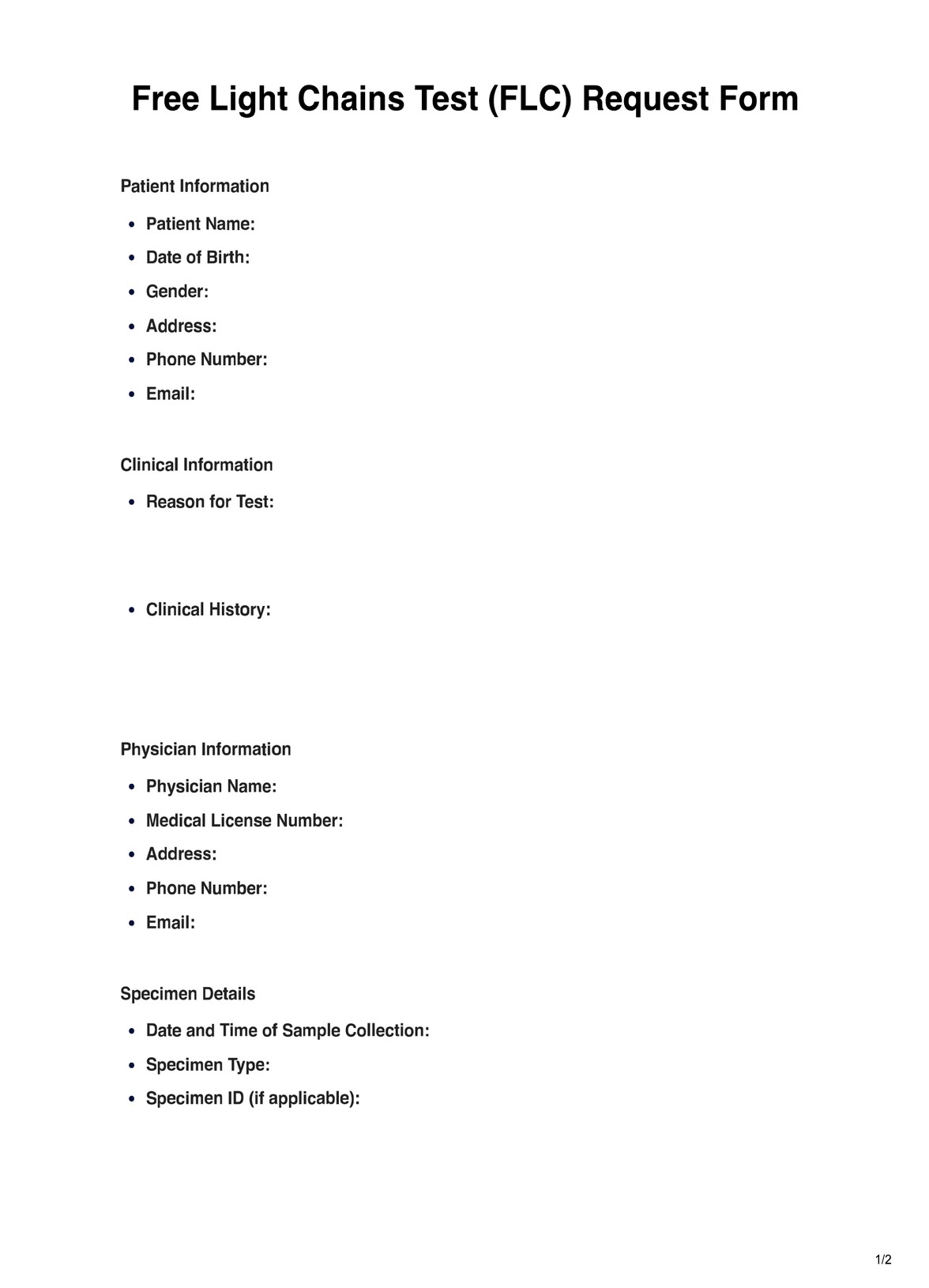Hematologists, oncologists, and immunologists usually request a Free Light Chains Test.

Free Light Chains
Get precise results with the Free Light Chains Test. It is essential for diagnosing multiple myeloma and other disorders. Learn more.
Use Template
Free Light Chains Template
Commonly asked questions
They are used to diagnose and monitor plasma cell disorders like multiple myeloma, assess treatment response, and investigate immunological conditions.
A blood sample is collected and analyzed in a clinical laboratory to measure free kappa and lambda light chains.
EHR and practice management software
Get started for free
*No credit card required
Free
$0/usd
Unlimited clients
Telehealth
1GB of storage
Client portal text
Automated billing and online payments











